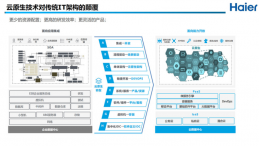By Robin Gariess
Implementing a unified communications strategy affects everything from IT operations to employee communications to wide area network (WAN) performance.
Optimizing the network for unified communications, though, requires a unified communications strategy of significant planning and effort prior to the start of any actual product implementations. Often, network and telecom staffs rush to start the project when instead they should slow down, consider the unified communications strategy, and make sure all the pieces are in place to ensure a successful project -- for those operating the unified communications (UC) support system and for those using it.
Network teams must start with something that, on the surface, seems simple -- defining what UC means to their company.
Nemertes Research defines UC as an architecture, rather than a product, application or service. UC is a model for integrating various communications and collaboration applications into a streamlined set of interfaces, gateways and functions that enable internal and external communications. User interfaces to these applications include IP hard phones, real-time communications dashboards, mobile devices, productivity applications, or customized devices or applications for a specific industry.
Presence is the "glue" of UC, enabling applications to share information about user status and availability. Also included in the architecture are interfaces to external systems, such as legacy PBXs, external wireless networks, or business applications, via Web services or service-oriented architecture (SOA) frameworks. And the architecture includes the core infrastructure -- management, directory and security services -- to support the applications.
Given this broad definition, it's easy to see why UC is not something IT staffs implement within a short time frame; it's an architecture that evolves over time and one that many say is never truly complete, because there are endless ways to integrate applications, communications and collaboration capabilities.
Though defining UC may appear to be straightforward, in reality, it's not an easy task. Expect disagreements over which applications will be part of the UC architecture, which vendors should be on the short list, how security and compliance will play a role, and whether enterprise applications will be integrated with collaboration applications, among other things. What's more, the definition is likely to change over time. Other factors -- such as business-unit buy-in and plans for related IT enterprise application or security projects -- will affect how the company's definition of UC evolves.
Understand that UC will change how companies integrate applications and services, as well as how individual users work. It also puts a huge strain on the network, considering that a bevy of real-time and non-real-time applications compete for finite resources. As companies are defining UC, they may include any combination of IP telephony, video conferencing, audio conferencing, Web conferencing, unified messaging, instant messaging, presence, wikis, blogs, social networking and more. Any of these applications then can integrate with enterprise applications, such as enterprise resource planning (ERP), customer resource management (CRM) and sales force automation (SFA). The network and apps teams could decide to extend any combination of capabilities to mobile devices.
So how do companies take the network, which historically has handled fairly predictable and non-delay-sensitive traffic, and equip it to handle a combination of real-time and non-real-time applications with varying levels of performance mandates? Using the right network technologies, management tools, and optimization devices is key once the network is up and running.[NextPage]
But successful IT and network teams must follow these best practices for pre-deployment of a UC strategy. Included on the checklist should be:
Benchmark performance of the current state. This is a key step IT staffs often overlook until it's too late. Any time the staff plans to deploy a new application, it should evaluate the performance of the application or business process it's replacing.
For example, prior to an IP telephony implementation, determine the before-and-after metrics of TDM compared with IP telephony. Consider metrics such as capital and operational cost (particularly moves, adds and changes, which go from about $300 per MAC with TDM down to $10 per MAC with IP telephony), mean opinion score, uptime, and ability to transfer calls and do abbreviated dialing, and so on. Measure the current status in order to compare it against future performance.
The reason to do this is to document success or failure of the application and network performance, user satisfaction and cost. The goal, of course, is to demonstrate success.
Conduct pre-UC deployment testing. Before moving any new application to the converged network, conduct pre-deployment testing. Numerous vendors, including CA, EMC, Fluke Networks and Net IQ, provide the tools for pre-UC deployment testing. Managed service providers, such as AT&T, CSC, EDS and IBM, will conduct a pre-deployment test as a service.
The pre-UC deployment test should include the following:
Check to see whether all the routers and/or switches will be able to handle real-time traffic over the network, in terms of capacity and quality-of-service (QoS) requirements.
Assess the current average and peak utilization of the network. This information helps to determine spare capacity available for real-time traffic, such as voice and video. Average utilizations range from 30% to 60%; peak utilizations range from 40% to 80%. Typically, voice traffic increases overall loads by 30%.
Send simulated voice packets over the network to model how it might perform once the traffic is converged, and adjust the network accordingly.
Measure the performance. Measurements should include latency, packet loss, jitter and overall availability. Consider developing a MOS specific to your organization.
Evaluate the need for network-optimization tools that can leverage existing bandwidth through compression and latency-reduction techniques. Also, consider QoS features that can help prioritize traffic and reduce latency.[NextPage]
Assess Power over Ethernet (PoE) capabilities and requirements. The lack of PoE can increase costs considerably.
Acknowledge that the one constant in network is change. Don't stop tracking network performance once the pre-deployment assessment is complete. Continue to benchmark network performance, preferably monthly or quarterly, and make changes accordingly.
……………………………
Unified communications strategy: Optimizing the network for UC
When optimizing a network for unified communications, it's important to maintain effective management and monitoring. But effective management and monitoring are usually the biggest oversights when creating a unified communications strategy for UC deployments.
IP telephony is one of the first applications of typical UC deployments, so it is a good indicator of issues that could arise with fu










































































































 京公網安備 11010502049343號
京公網安備 11010502049343號